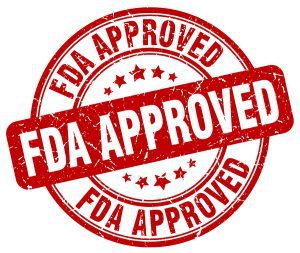Navigating Regulatory Requirements: FDA Approval Process for Medical Devices
Since 1906, the United States Food and Drug Administration has played a critical role in the everyday lives of Americans. Anyone who has taken the time to check out the nutrition facts on the packaging of food in their pantry is probably acutely aware of the FDA. Many might be surprised to discover the role, however, that the FDA plays in the development and approval of medical devices.

From simple bandages to complex life-saving technologies, the FDA scrutinizes them all to make sure they are safe and effective before they reach your home. The FDA approval process is rigorous and multi-step, designed to protect the public’s health while also fostering innovation in the medical field.
Manufacturers of medical devices, like Levison Enterprises, must register with the FDA annually. This allows the FDA to collect and track information on the medical devices marketed in the United States, such as where devices are being manufactured.
Medical Device Classifications
When talking about the FDA’s approval process, it’s important to recognize that not all medical devices are subject to the same level of regulatory scrutiny. The FDA classifies medical devices into three distinct categories based on the underlying risk to people who will ultimately be using the device. Those categories are simply labeled Class I, Class II or Class III.
Class I represents devices with the lowest amount of overall risk to those who will be using them. Bandages, tongue depressors, and non-electronic thermometers fall into this class. Items in this class are subject to what the FDA calls “General Controls,” which involve adhering to basic manufacturing standards, labeling, and record maintenance. Many of the devices in this category are exempt from the premarket notification or approval process — steps that we will discuss later that largely apply to only Class II and Class III devices.
Stepping up to devices such as infusion pumps, diagnostic imaging equipment, and surgical drapes brings us to Class II. These devices involve moderate risk of use, and of course carry more regulatory oversight. Class II devices are subject to “Special Controls,” which encompasses performance standards, post-market surveillance and in some instances, premarket notification.
The final class, Class III, includes devices with the highest level of risk. Life-supporting or life-sustaining technologies such as pacemakers, artificial heart valves, and implantable defibrillators are in this class. These devices are, of course, subject to a much more stringent approval process involving the more extensive testing of premarket approval.
Any manufacturer of medical devices intended for the U.S. market must list those devices with the FDA before taking them to market. The FDA’s approval process for medical devices is designed to ensure that all products meet the necessary safety and efficacy standards. The specific path that a device will follow to approval depends on its classification.

Premarket Notification (510(k))
For most Class I and Class II devices, manufacturers must submit a 510(k) notification to the FDA before they begin marketing their product. This process involves demonstrating that the new device is substantially equivalent to a device already being legally marketed (also called a predicate device). This submission includes a description of the device, the intended use for the device, a comparison to the predicate device, and data supporting the safety and effectiveness of the device.
Premarket Approval (PMA)
For Class III devices, manufacturers must undergo the premarket approval process. This is a more comprehensive process, and requires the submission of detailed clinical data that demonstrates the device’s overall safety and effectiveness.
The PMA process involves:
- Submission of a detailed PMA application, which includes a description of the device, the manufacturing process, proposed labeling, and results from preclinical and clinical studies.
- Manufacturers must conduct rigorous trials to collect data on the device’s performance, which may involve multiple phases of testing. These trials often involve human subjects. The FDA requires that they meet specific ethical and regulatory guidelines, including obtaining informed consent.
- After the PMA application is submitted, the FDA conducts a thorough review, which can take from six months to over a year. The timeframe depends on the complexity of the device and the strength of the data submitted.
De Novo Classification
When a device is wholly new and there is no existing predicate device, but the device poses only a moderate to low risk, manufacturers can request a De Novo classification request. This allows the FDA to classify the device in the appropriate category (either Class I or Class II) after reviewing the safety and effectiveness data. The De Novo process is designed to provide a regulatory pathway for novel devices that have no predicate. This allows them to reach the market while still ensuring safety for those utilizing the device.
Post-Market Monitoring
The process doesn’t end when a manufacturer is given approval to market a device. The FDA continues to monitor the safety and performance through different post-market surveillance programs.
Medical Device Reporting (MDR) requires manufacturers to report any adverse events or device defects. Post-market studies are completed to further assess long-term effects on different populations. If new information reveals a significant risk to users, the FDA has the authority to initiate a recall and remove the unsafe device from the market.
Obtaining and complying with the FDA approval process requires an experienced medical device manufacturing partner. When you team up with Levison Enterprises, you can rest assured that our experienced team will be a valued partner in navigating the FDA approval process. Contact Levison Enterprises to find out how we can help you with your electronic medical device manufacturing needs.
Start Your Quote Now!